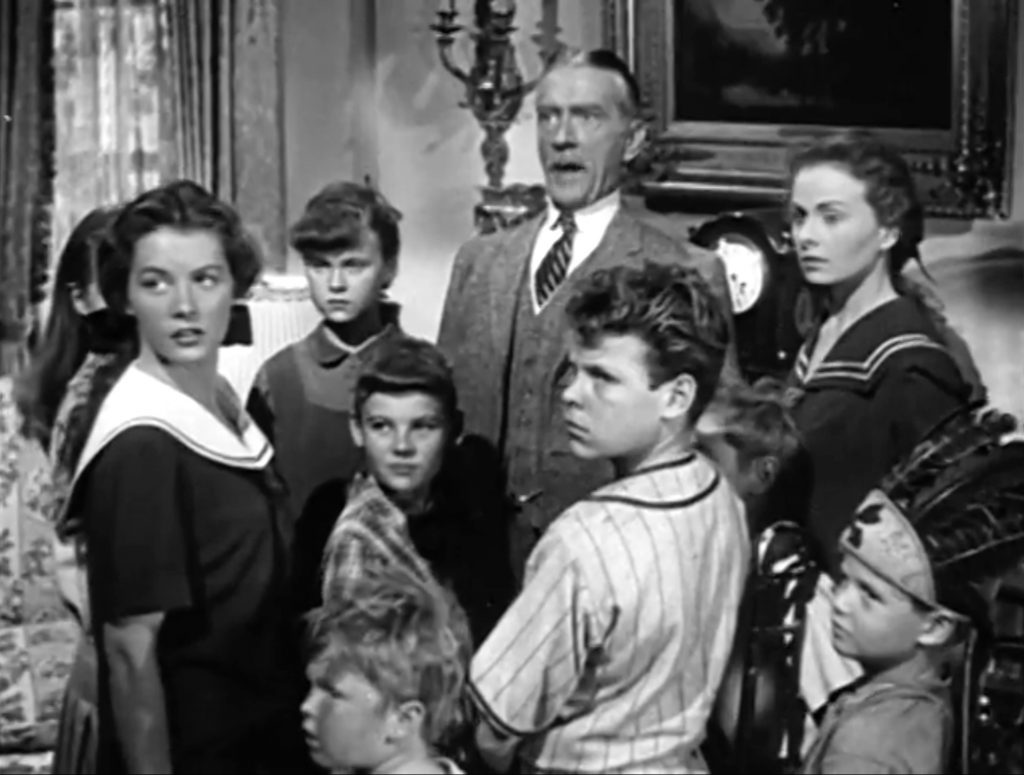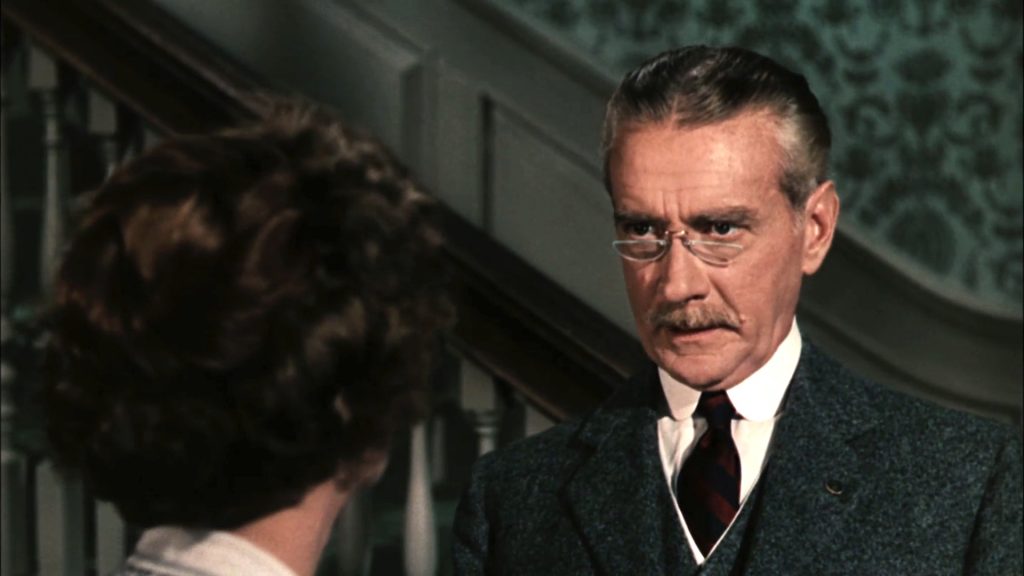Cheaper by the Dozen starring Clifton Webb, Myrna Loy, Jeanne Crain, directed by Walter Lang
Cheaper by the Dozen – the funny and sweet story of loving parents Clifton Webb & Myrna Loy, raising their twelve children
Synopsis of Cheaper by the Dozen
![]() Cheaper by the Dozen is narrated by the oldest daughter (Jeanne Crain) of the family. The story follows a series of family crises over the years. From how the children overwhelmed their new school’s administration office, to the time they threw a hospital into chaos when they arrived for a mass tonsillectomy. There’s even a memorable encounter with a birth control advocate. Simultaneously hilarious and sentimental, Cheaper by the Dozen is a family comedy in the truest sense.
Cheaper by the Dozen is narrated by the oldest daughter (Jeanne Crain) of the family. The story follows a series of family crises over the years. From how the children overwhelmed their new school’s administration office, to the time they threw a hospital into chaos when they arrived for a mass tonsillectomy. There’s even a memorable encounter with a birth control advocate. Simultaneously hilarious and sentimental, Cheaper by the Dozen is a family comedy in the truest sense.

Mailman: All those kids yours?
Frank Gilbreth: Oh, these aren’t so many. You ought to see the ones we left behind.
Mailman: How you ever feed ’em?
Frank Gilbreth: Oh, they come cheaper by the dozen.
Product Description
Clifton Webb stars in this lighthearted comedy as a patriarch who has more children than he can count on both hands. Along with his loving wife, played with dry humor by Myrna Loy, Frank Gilbreth must contend with the problems of five fathers. This includes a mass tonsillectomy and the eldest daughter’s adolescent crises; her lack of a date to the school dance is solved skillfully by Dad, who takes her himself! Based on the true story of Frank and Lillian Gibreth’s child rearing adventures as they were depicted in the book written by two of their children, CHEAPER BY THE DOZEN is directed with a refreshing post-war optimism by Walter Lang. Though the huge family must be run with a workmanlike, though comic, efficiency, it is Dad’s charm and love for his offspring keeps the family together.
Repairman: All those kids yours, Mister, or is this a picnic?
Frank Gilbreth: They’re all mine and believe me, it’s no picnic!
Highlights

- The kids descend upon the new school en masse while Dad offers unsolicited views on education.
- Dad takes his oldest daughter to the school dance, and becomes the hit of the ball.
- A mass tonsillectomy becomes an opportunity to document the ordeal as an experiment in efficiency.
- Myrna Loy almost steals the film in one scene. She holds back a smirk while a birth-control advocate asks this mother of 12 to speak at a rally.
Cast of characters
- Clifton Webb (Titanic 1953; The Man Who Never Was) … Frank Bunker Gilbreth
- Jeanne Crain (O. Henry’s Full House; State Fair) … Anne Gilbreth
- Myrna Loy (Libeled Lady; Another Thin Man) … Mrs. Lillian Gilbreth
- Betty Lynn (The Andy Griffith Show) … Deborah Lancaster
- Edgar Buchanan (Penny Serenade; Move Over Darling) … Dr. Burton
- Barbara Bates (The Inspector General; The Caddy) … Ernestine Gilbreth
- Mildred Natwick (The Quiet Man; The Enchanted Cottage) … Mrs. Mebane. The birth control advocate, who wants Mrs. Gilbreth to speak at a rally. Be careful what you ask for …
- Sara Allgood (Mother Wore Tights) … Mrs. Monahan
Songs
- When You Wore a Tulip (and I Wore a Big Red Rose) (1914)
- Music by Percy Wenrich
- Lyrics by Jack Mahoney
- Played during the opening credits and occasionally in the score
- Sung by all in the car
- Memories (1915)
- Music by Egbert Van Alstyne
- Lyrics by Gus Kahn
- Sung by some in the car
- Home Sweet Home (1823)
- aka “There’s No Place Like Home”
- Music by H.R. Bishop
- Played when they first arrive at the new house
- Love’s Old Sweet Song (Just a Song at Twilight) (1884)
- Music by J.L. Molloy
- Played by the children on various instruments
- Row, Row, Row (1912)
- Music by James V. Monaco
- Played at the beginning of the Nantucket sequence
- Song of the Islands (Na Lei O Hawaii) (1915)
- Music by Charles E. King
- Played by Craig Hill on the ukulele at the beach
- On the Beach at Waikiki (1915)
- Music by Henry Kailimai
- Lyrics by G.H. Stover
- Played by Craig Hill on the ukulele, sung by him at the beach
- Ja-Da (1918)
- Music by Bob Carleton
- Played at the dance
- The Vamp (1919)
- Music by Byron Gay
- Played when Ann and Tom are outside talking and when Ann and Frank are dancing
Trivia
- In the actual Gilbreth family, daughter Mary died from a childhood illness. The movie includes a Mary, but keeps her in the background with no lines.
- On the living-room shelf is a picture of the real Frank Gilbreth in uniform as an Army Major during WWI.
- The mother is a degreed psychologist. The gold necklace she wears is a Phi Beta Kappa Key (honors society).
- The big house the family moves to in Montclair is the same house set originally built for Judy Garland‘s family in Meet Me in St. Louis.
- The staircase/entrance way with the green wallpaper and double doors under the landing to the left is the same staircase/entrance way used in the TV series Dark Shadows(1966).


